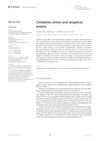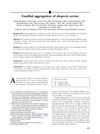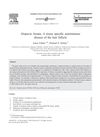Gamma Delta T Cells as Novel Players in Alopecia Areata Pathobiology: Vdelta1 Positive T Lymphocytes May Recognize Stressed Hair Follicle Keratinocytes, Leading to IFN Gamma-Dependent Hair Follicle Dystrophy and Immune Privilege Collapse
April 2016
in “
Journal of Investigative Dermatology
”
TLDR Targeting specific T cells may help treat alopecia areata.
The study explored the role of γδ T cells in the pathobiology of alopecia areata (AA), an autoimmune disease affecting hair follicles (HF). It was found that γδ T cells, particularly NKG2D+/Vδ1 TCR+ cells, were present in the lesional skin of AA patients and in a human scalp skin xenotransplant model. These cells were hypothesized to contribute to HF immunopathology by recognizing "stressed" HF keratinocytes, leading to IFNγ-dependent HF dystrophy and immune privilege collapse. The study suggested that targeting NKG2D+ Vδ1 T cells could be a potential therapeutic strategy for managing AA.



